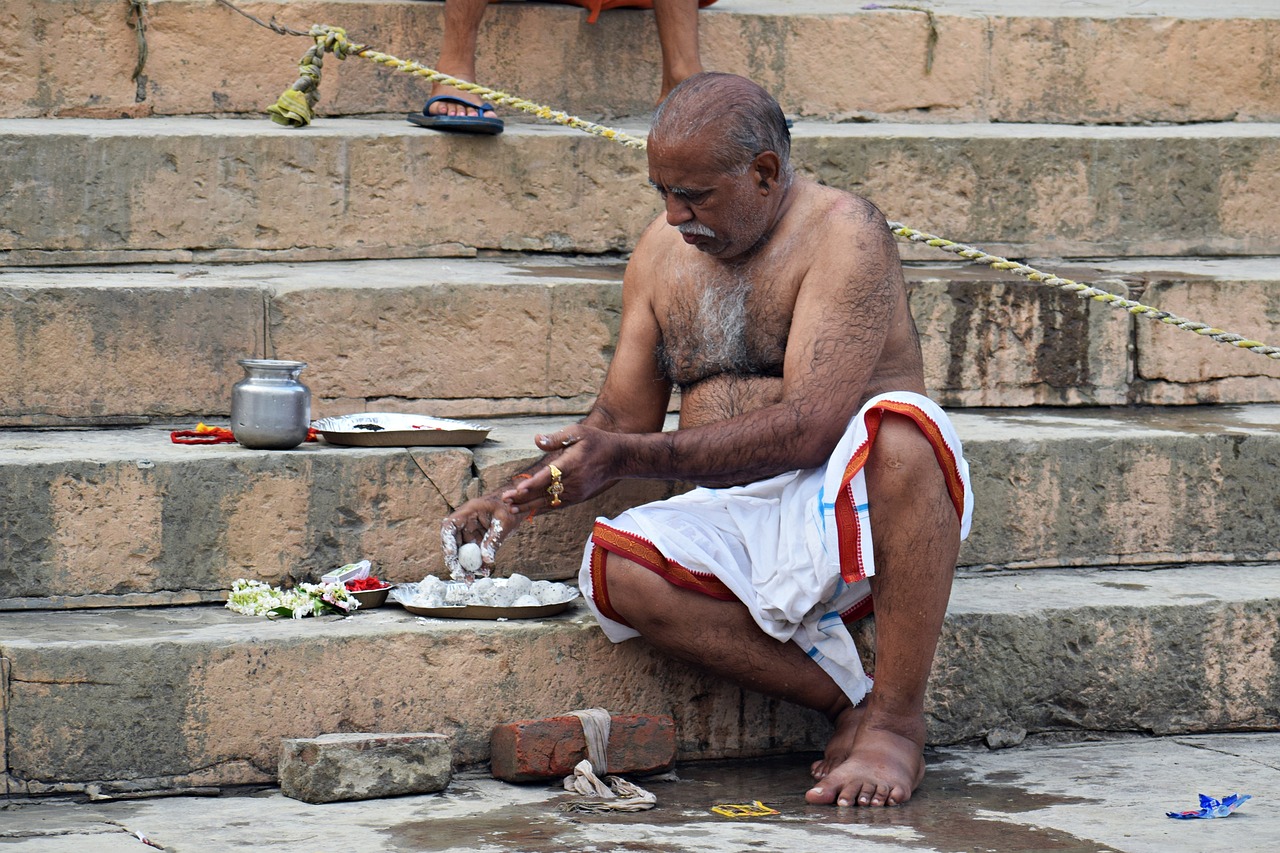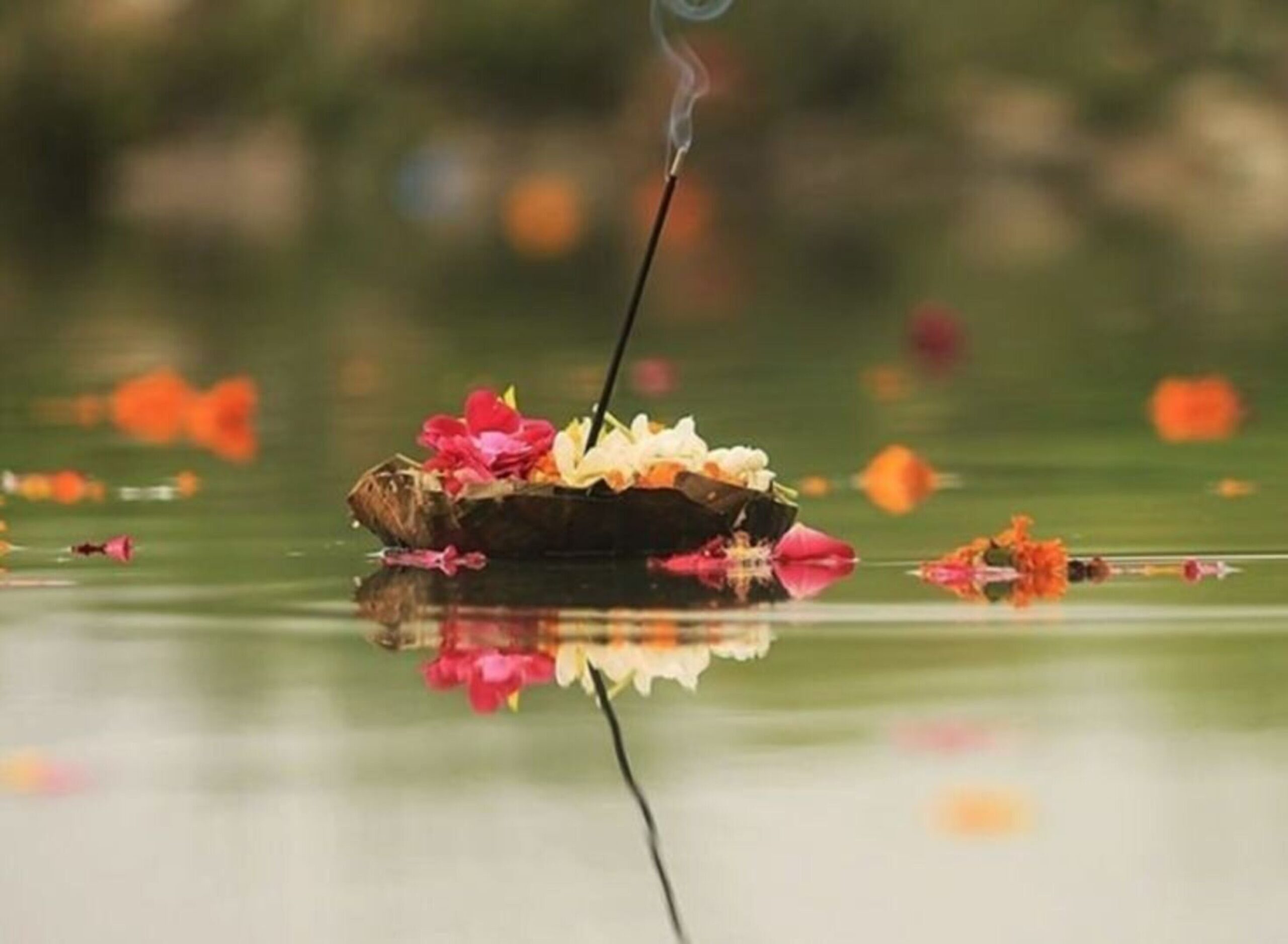Introduction — The Meaning & Purpose of Antyesti
Antyesti (अंत्येष्टि) — also known as Antim Sanskar — is the final sacrament in Hindu tradition. At its core it is an act of duty (dharma) by the living to honor the departed, assist the soul’s transition, and provide emotional and communal closure. Rooted in the Vedas and elaborated in the Garuda Purana, Antyesti combines ritual precision with profound compassion.
Philosophy & Scriptural Foundations
The body is composed of five elements (Pancha Mahabhuta). The cremation (Dah Saṃskār) is symbolic of returning the physical elements to nature while the soul (ātman) continues its journey. The Garuda Purana narrates the journey after death and prescribes rites to shape the departed’s path. Performing Antyesti with the correct sequence is seen as a sacred responsibility.
Complete Step-by-Step Antyesti Rituals
Below is a walkthrough of the ritual stages. For deeper detail, read the extended explanations that follow.
Immediate First Actions (0–3 hours)
Obtain a medical certificate, notify family and close relatives, calm the environment, and assign roles: coordinator (logistics), karta representative, and pandit liaison.
Bathing & Preparing the Body (Snāna & Kafan)
Ritual bathing with Gangajal, anointing with sandalwood, and wrapping in a simple white shroud (kafan). Place Tulsi or bilva per lineage practices.
Procession & Cremation (Dah Saṃskār)
Transport to the crematorium or ghat respectfully. The karta performs mukhāgni; the pandit leads mantras. For electric crematoria, symbolic offerings and mantras proceed before cremation.
Asthi Collection & Visarjan
Ashes are collected and kept in an urn or matka; immersion in a holy river or proxy immersion by priests at Haridwar/Varanasi can be arranged.
Post-Cremation (Pind Daan & Terahvin)
Over days 10–13 pind daan & sapindikarana are performed, followed by terahvin (concluding rites) and community meals if the family chooses.
Detailed Ritual Guide — Practical & Scriptural Notes
The full Antyesti sequence includes distinct actions performed by the family, priests and attendants. Below we expand each stage with clear, practical instructions, suggested mantras (transliterated), and community variations.
1. Immediate Protocols & Medical Certification
For hospital deaths obtain the death certificate. For home deaths contact a registered physician to certify. Keep copies of identity documents of the deceased and the karta. Contact Swargayatraa immediately for logistics — we handle removals with dignity and PPE where needed.
2. Ritual Bath & Shroud (Snāna & Kafan)
Wash the body with warm water and Gangajal; apply sandalwood paste lightly. Use a simple cotton white shroud. Avoid ornate fabrics; remove jewelry and record valuables. Place a Tulsi leaf if family tradition requires.
3. Mukhagni & Cremation
At the cremation ground the pandit recites funeral mantras. In many traditions the karta lights the pyre (mukhagni) while chanting a final prayer. For electric crematoria, a symbolic flame is used and mantras are recited before introduction to the retort.
Sample Invocation (translit.): "Om hrim hum ram phat" — Use only with a learned pandit; pronunciations matter.
4. Ash Collection & Asthi Visarjan
Collect ashes once cooled; place in an earthen urn (matka) or certified container. Perform immersion in a sacred river; if unable to travel, arrange a documented proxy immersion with priest certification and photos/video.
5. Post-Cremation Rites: Pind Daan, Sapindikarana & Terahvin
Pind daan nourishes the subtle body; sapindikarana unites the preta (disembodied soul) with pitṛs (ancestors). Terahvin (13th day) concludes primary mourning and is often marked by a community meal and final prayers.
Regional Variations — Respecting Lineage & Local Customs
Rituals differ across India. Below are common regional flavours — request a pandit matched to your community for exact rites.
North India
Common chants include Ram Naam and Vedic hymns; mudras and specific pinda offerings on day 10 are typical. Garuda Purana reading is common in many households.
South India
Local Agama or Vedic traditions influence chants and sequence. Use of oil, temple priests, and region-specific mantras is common.
East India
Bengal and Odisha observe Dashakriya and distinct post-death hospitality customs. Shraddha customs may be more elaborate and community-focused.
West India
Maharashtrian Daswa and Gujarati sequences emphasize family gatherings and community feeding; daughters increasingly act as karta in many families.
Comprehensive Samagri Kit — Ritual Supplies
Below is a practical, printable samagri list used widely. Swargayatraa supplies pre-packed samagri kits checked by senior pandits.
- White shroud (kafan)
- Bamboo stretcher (arthi)
- Pure ghee
- Camphor (kapoor)
- Sandalwood sticks & paste
- Tulsi / bilva leaves
- Rice for pindas
- Black sesame seeds (til)
- Earthen pot (matka) for ashes
- Ganga jal in sealed bottle
- Diya, cotton wicks, matchbox
- Flowers and garlands
- Havan samagri and havan kund if required
- Pandit accommodation & travel (if required)
Why a pre-packed Samagri Kit helps
During grief it is hard to source many ritual items. A single sealed kit ensures authenticity, purity, and the correct items for the rite without last-minute errands.
Transparent Pricing & Sample Packages
We provide transparent, itemized quotes. Typical line-items are transportation, pandit fee, samagri, cremation booking, and any proxy asthi visarjan services.
| Package | Includes | Indicative Price |
|---|---|---|
| Basic | Transfer + Basic Samagri | ₹15,000–30,000 |
| Standard | Pandit + Samagri + Ash Collection | ₹30,000–60,000 |
| Premium | Full 13-day coordination + Proxy Asthi | ₹60,000–250,000+ |
Comprehensive Antyesti & Hindu Funeral Services – All in One Place
Swargayatraa understands that during the loss of a loved one, every minute matters. That’s why we provide end-to-end Hindu funeral and Antyesti arrangements in all major metro and tier-1 cities in India — ensuring every tradition is respected and every detail is handled with dignity, compassion, and precision.
🚐 Dead Body Transportation
24×7 transportation services via hearse vans, ambulances, freezer vans, and even interstate & air cargo transfers. We ensure safe, respectful, and timely movement of the departed, anywhere in India.
🔥 Electric & Wooden Pyre Cremation
Full coordination for both eco-friendly electric cremations and traditional wooden pyre cremations, in line with Hindu customs, including slot booking and onsite assistance.
🙏 Pandit for All Rites
Arrangement of experienced North & South Indian Pandits for every Antyesti and post-cremation ritual, with authentic Vedic mantras and language preferences.
🛍️ All Ritual Saamagri
Complete Antyesti Saamagri kits delivered to the venue — including kafan (shroud), arthi (bier), ghee, camphor, dhoop, flowers, clay pots, Tulsi leaves, chhatta (ritual umbrella), and more.
📅 Crematorium Slot Booking
We handle advance booking of cremation grounds to avoid delays, and coordinate with municipal authorities for a smooth process.
🛠️ On-Ground Coordination
From the moment we receive your call until rituals are completed, our trained staff remain on-site to guide and manage all arrangements seamlessly.
🕊️ Post-Cremation Rituals
We conduct Shraddha, Pind Daan, Asthi Visarjan, Shanti Pooja, and other 10th, 11th, and 13th day ceremonies — arranged at temples, homes, or holy cities.
🍲 Satvik Bhojan Catering
Pure vegetarian Satvik meals for guests and Brahmins after rituals, following traditional Hindu guidelines.
🎵 Funeral Processions & Bands
Traditional music bands and procession vehicles for honoring the departed during the final journey.
❄️ Freezer Box Arrangements
Portable and on-site freezer boxes to preserve the body before cremation, available for home and hospital use.
What Families Say
Frequently Asked Questions – Antyesti & Hindu Funeral Rites
Quick How-To: Emergency Checklist
- Confirm death & obtain medical certificate.
- Call Swargayatraa: for immediate coordination.
- Arrange dignified transport & samagri kit.
- Perform ritual bathing & shrouding with pandit guidance.
- Conduct cremation; collect ashes.
- Arrange asthi visarjan (proxy if required).
- Perform pind daan and conclude with terahvin.
Authority & Verification

Senior Vedic scholar with 25+ years conducting Antyesti and Shraddha rites across India. Ritual scripts are reviewed by our senior team.


